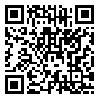Objectives: Motor weakness is a notable symptom after stroke. Hence, the aim of this study was to find out the effect of bilateral quadriceps training compared to that of unilateral quadriceps training on balance, functional mobility and functional gait in patients with stroke. Subjects: Male and female hemiparetic patients between 40-60 years of age with post-stroke of 1-6 months were included in the study. Study Design: Test re-test was performed.
Methods: Data was obtained through strain gauge, Berg balance scale, dynamic gait index and timed up and go test, and then again, data was obtained with the help of the above-mentioned instruments 6 weeks after providing the patient with strength training.
Results: Functional mobility and isometric strength of unaffected side gave significant values and balance, functional gait and isometric strength on affected side gave insignificant values.
Discussion: The findings of the present study suggested that bilateral quadriceps training is good to improve functional performances like timed up and go test and isometric strength on the unaffected side. However, to improve further, the Berg balance scale, dynamic gait index and isometric strength scores of affected side, for both the bilateral quadriceps and unilateral quadriceps training, are equally effective.
دریافت: 1395/6/20 | پذیرش: 1395/10/6 | انتشار: 1395/12/11
| بازنشر اطلاعات | |
 |
این مقاله تحت شرایط Creative Commons Attribution-NonCommercial 4.0 International License قابل بازنشر است. |


